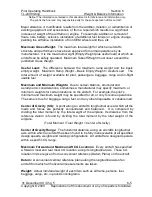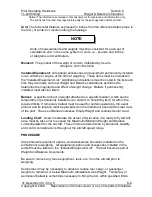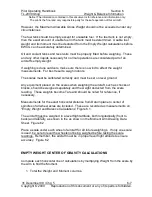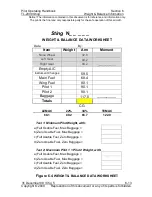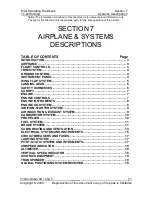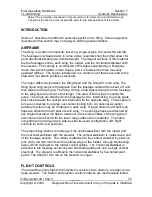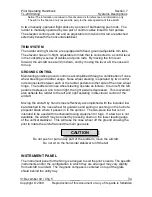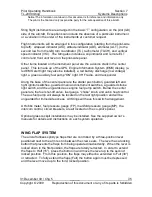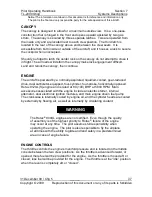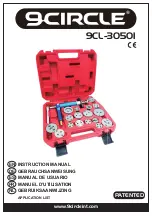
Pilot Operating Handbook
Section 7
TL-2000
Sting
Systems Descriptions
Notice! The information contained in this document is for reference and information only.
The pilot is the final and only responsible party for the safe operation of this aircraft.
31 December 09 / Chg 5
______
7-4
Copyright © 2009 Reproduction of this document or any of its parts is forbidden.
to two manually-operated flight sticks by a series of ball bearing push rods. The
rudder is manually operated by two pair of control cables linked to foot pedals.
The elevator control push rod and an adjustable trim tab control rod are attached
externally beneath the horizontal stabilizer.
TRIM SYSTEM
The rudder and right aileron are equipped with fixed, ground-adjustable trim tabs.
The elevator has an in-flight, adjustable trim tab that is connected to a control lever
in the cockpit by a series of cables and push rods. By moving the trim lever
forward, the aircraft nose will trim down, and by moving the lever aft, the nose will
trim up.
GROUND CONTROL
Maintaining positive ground control is accomplished through a combination of nose
wheel steering and rudder usage. Nose wheel steering is operated by two control
rods connected between each of the rudder pedals to either side of the nose wheel
hinge. The rudder and nose wheel steering operate as follows: to turn left, the left
pedal is depressed, and to turn right, the right pedal is depressed. This movement
also deflects the rudder to the left and right assisting in directional control of the
aircraft.
Moving the aircraft by hand is most effectively accomplished with the included tow
bar attached to the nose wheel for guidance and pulling or pushing on the hub of a
propeller blade where it passes in to the spinner. The two-piece tow bar is not
intended to be used with mechanical towing equipment or tugs. If a tow bar is not
available, the aircraft may be turned by pressing down on the lower leading edge
of the vertical stabilizer. This will raise the nose wheel off the ground allowing the
pilot to rotate the aircraft around the main gear axis.
Do not push or pull on any part of the rudder to move the aircraft.
Do not sit on the horizontal stabilizer to lift the tail.
INSTRUMENT PANEL
The instrument panel for the Sting is arranged to suit the pilot’s needs. The specific
instruments and/or the configuration in which they are arranged may vary slightly
from aircraft to aircraft. The magnetic compass is centered on top of the glare
shield behind the utility tray.
CAUTION


